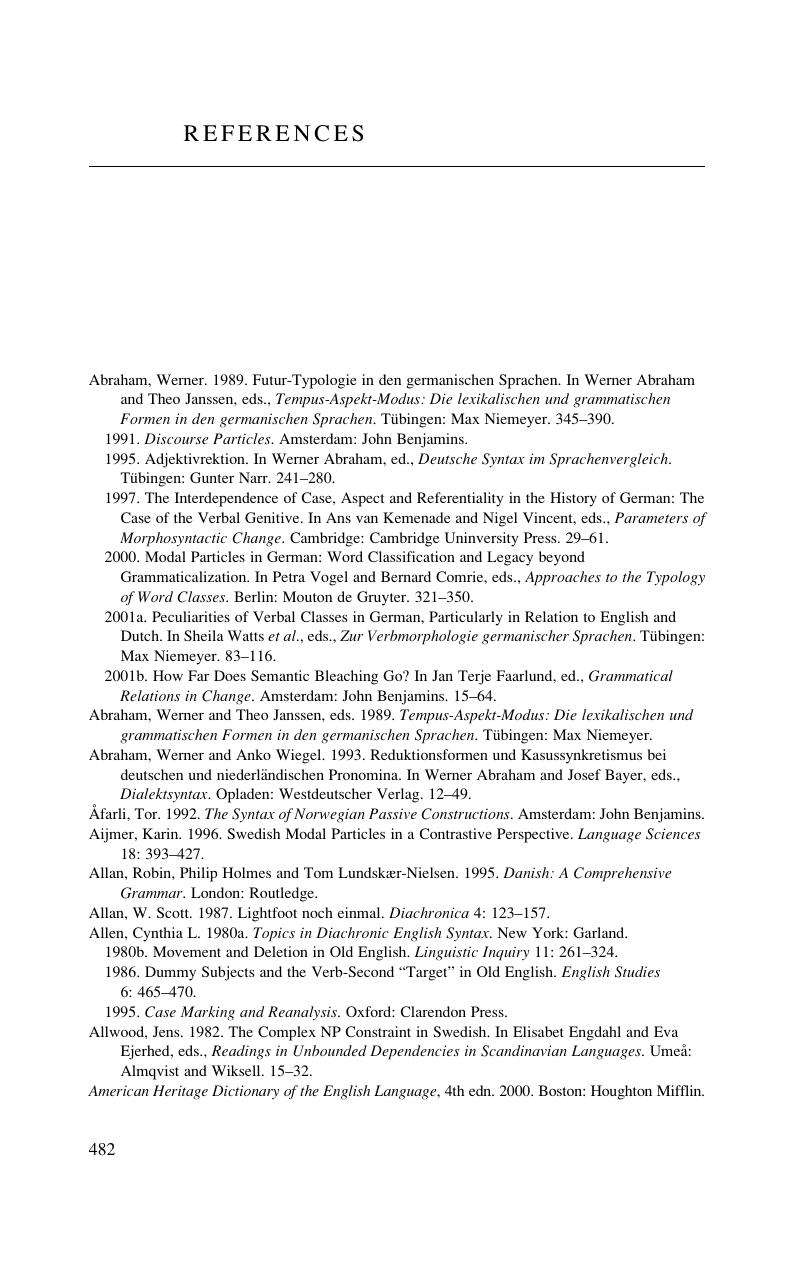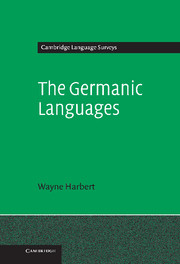Book contents
- Frontmatter
- Contents
- List of tables
- List of language abbreviations
- Acknowledgments
- 1 Introduction
- 2 The Germanic lexicon
- 3 The sound systems of Germanic: inventories, alternations and structures
- 4 The Germanic nominal system: paradigmatic and syntagmatic variation
- 5 The verbal systems of Germanic: paradigmatic and syntagmatic comparison
- 6 The syntax of the clause
- References
- Index
- References
- Frontmatter
- Contents
- List of tables
- List of language abbreviations
- Acknowledgments
- 1 Introduction
- 2 The Germanic lexicon
- 3 The sound systems of Germanic: inventories, alternations and structures
- 4 The Germanic nominal system: paradigmatic and syntagmatic variation
- 5 The verbal systems of Germanic: paradigmatic and syntagmatic comparison
- 6 The syntax of the clause
- References
- Index
- References
Summary

- Type
- Chapter
- Information
- The Germanic Languages , pp. 482 - 504Publisher: Cambridge University PressPrint publication year: 2006



